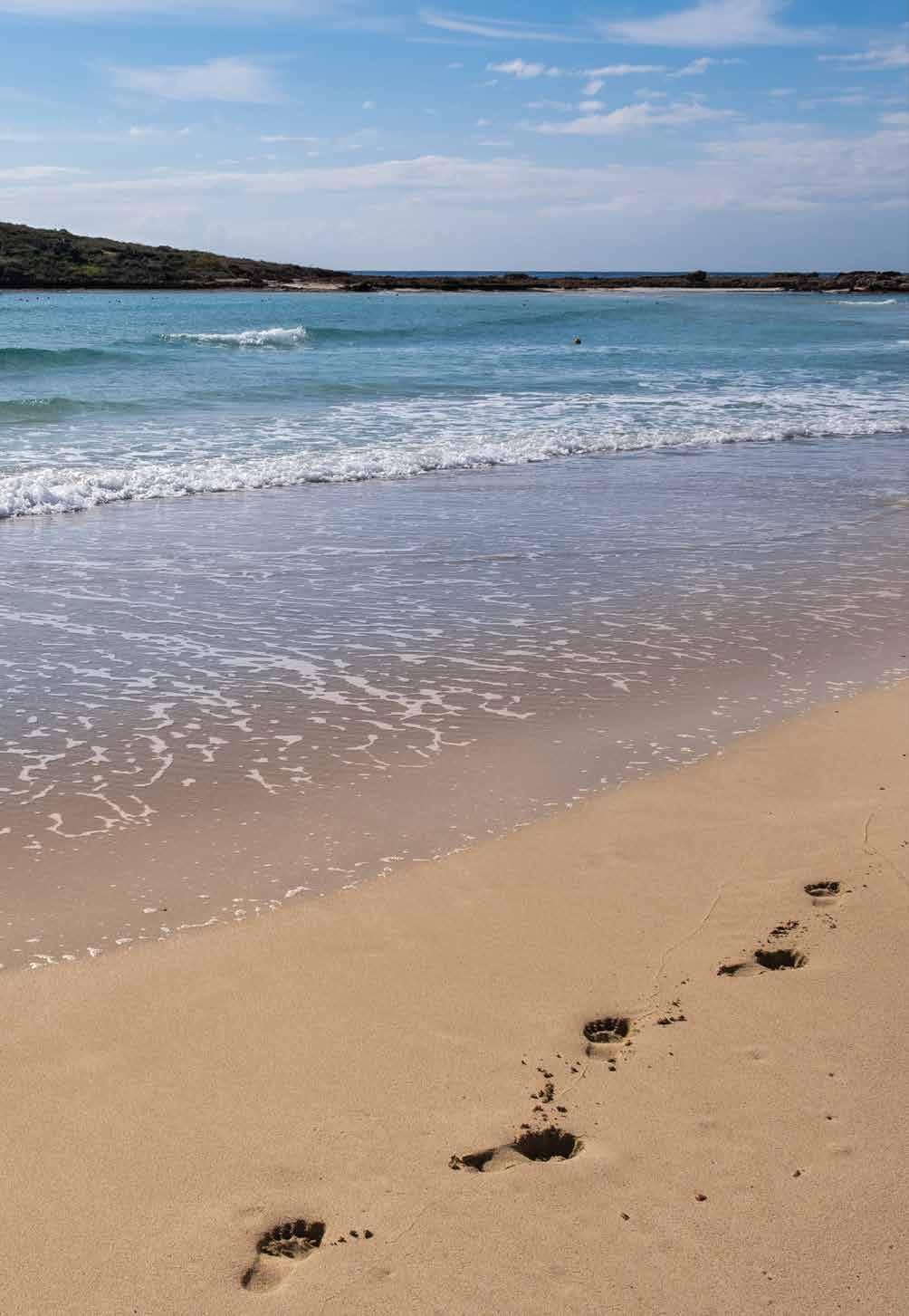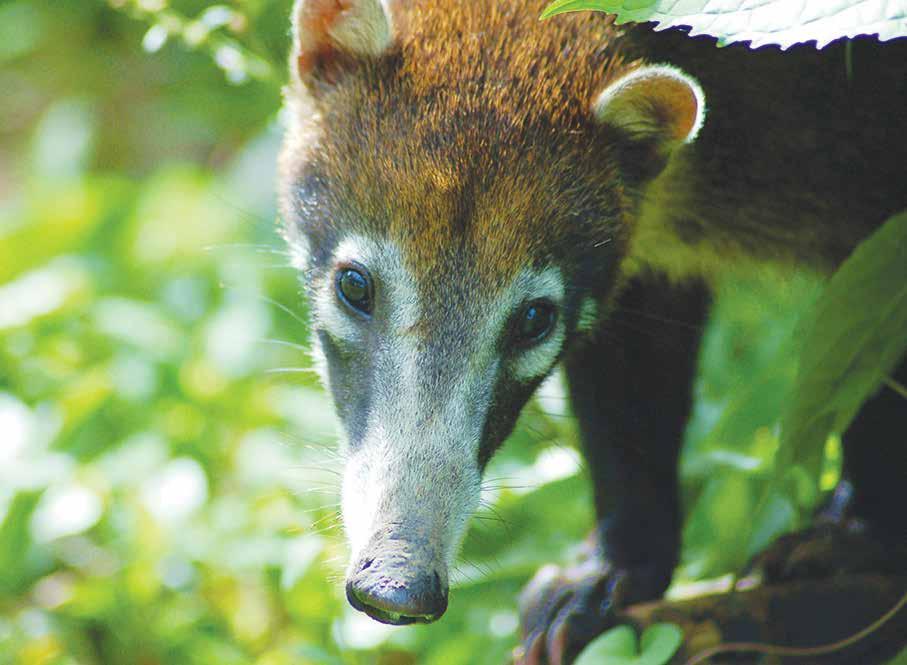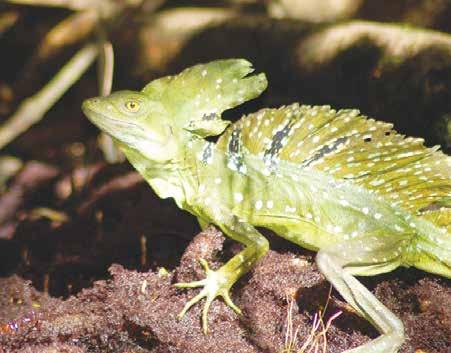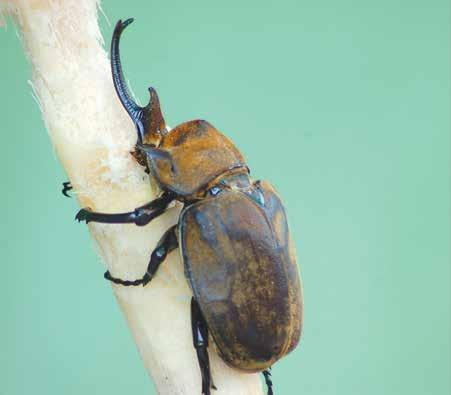
5 minute read
Take Photos, Leave Footprints
Costa Rica: A Wildlife Loving Paradise

Costa Rica accounts for only 0.03% of the earth’s surface, and yet it manages to pack an enormous estimated 4-6% of the world’s biodiversity into its tiny patch of land. It’s for this very reason that most people visiting Costa Rica spend a significant portion of their time searching for the country’s famed wildlife. If you’re in the minority group of tourists who plan to drink Mai Thais on the beach with your eyes closed, then stop reading now. In this article I’m going to show you how to make the most of your wildlife experience in Costa Rica, and what you might see on your travels.
Costa Rican Wildlife
Costa Rica sits in the top 20 most biodiverse countries on earth and is home to a whopping 500,000 species. Admittedly, 300,000 of those species are insects, but that still leaves a staggering 200,000 animals for you to discover. While some of those animals are notoriously difficult to sight (our guide in Tortugero hadn’t seen a jaguar in ten years of working there), other species are spotted with more regularity. For example, you stand a great chance of sighting: two and three toed sloths; coatimundis; dolphins; caimans; American crocodiles; monkeys (most notably capuchins and howlers); dart frogs (the tourist ambassador of Costa Rica); toucans; turtles; basilisks and bats. If you’re lucky you might see a tapir or an anteater. If you have a few months or years to spare, and remote survival skills to rival Bear Grylls, then you might (just might) see jaguars, ocelots, pumas, jaguarundi, margays, ocelots, and little spotted cats.
Costa Rica’s Best Wildlife Destinations
Just as if you were going on safari in Africa, you’re likely arriving in Costa Rica with a good idea of which animals you’re most excited to see in the wild. I went with the desire to find a sloth that looked like it was smiling (I blame overexposure to YouTube videos). If this is the case, then make sure you do research before you leave and plan your trip around the destinations and National Parks that give you the best chance of sightings. There are an eye-watering number of

National Parks across the country and the Government of Costa Rica protects an amazing 25% of the country’s landmass including 26 National Parks. So, ‘which should I focus on?’ I hear you ask. Here are my picks based on a combination of diversity and wildlife spotting opportunities:
Monteverde
Monteverde, also known as the ‘Highland Cloud Forest’, is in Costa Rica’s Central Highlands. As its name suggests, it’s a rather large forest that is often descended upon by clouds. This provides a unique and mysterious setting for wildlife spotting. It is home to over 100 different mammals, including capuchin and howler monkeys, all the cats that Costa Rica has to offer, deer, tapir and sloths. I also managed to see a paca and an armadillo. It also has 1,200 species of amphibians and reptiles, including venomous and non-venomous snakes, frogs and toads. My advice is to stay in nearby Santa Elena, where there are a good number of restaurants and bars to frequent after a day of walking the reserve’s trails (preferably with a guide to make spotting wildlife easier). The trails also include suspension bridges which allow you access to the forest canopy for a unique wildlife sighting opportunity….and don’t forget the opportunity to go zip-lining across the jungle!

Tortuguero (Coastal Wetlands)
Tortuguero offers the chance to feel like a true explorer. Only accessible by boat (from Moin - the cheapest option) or by light aircraft (from San Jose - the most expensive option), the park is a wetland wonderland fringed with tropical rainforest. It’s also a little less touristy than some of the other parks in Costa Rica, which makes it all the more enjoyable (if you’re looking for an abundance of restaurants and nightlife this probably isn’t the park for you). It also offers the opportunity to spot wildlife by boat and foot that you might not have seen elsewhere. My personal highlight was a nighttime visit to the green turtle nesting grounds by kayak. This will also give you the chance to spot caiman, American crocodiles and West Indian manatee. If you’re looking for mammals, then head out on the trails. But if you’re all about being on the water then Tortuguero is the place. Cautionary note, you shouldn’t swim in the park because of the dangerous numbers and species of sharks and strong currents off the coast.
Arenal (Dramatic Volcanic Scenery and Primary Rainforest)
Arenal is not only a great place to spot wildlife (most notably for birders, as more than 600 bird species can be found here alone), but it’s also an adventurer’s paradise. You can pick from any combination of canoeing, kayaking, white water rafting, spelunking, caving, kite surfing, hiking, fishing, abseiling, canopy tours, swimming in geothermal springs, quad biking and horseback riding; phew, and that’s all with a backdrop of the spectacular Arenal Volcano (now inactive since 2010). From a wildlife perspective, you’ll head out from your base in La Fortuna town and head in to the four zones of the park where you might spot sloths, coatis, monkeys, deer and boa constrictors (probably best to have a guide with you for the latter)!



Manuel Antonio (Coastal Rainforest and Marine Paradise)
Manuel Antonio is one of the smallest parks in the country at only 16 square kilometers, but it packs a seriously big wildlife punch. You’re likely to see red-eyed tree frogs, iguanas, bats, monkeys (capuchin, howler, and squirrel) and raccoon. However, the park is more than just land animals; its pristine beaches are just the start of a superb marine wildlife habitat that includes spotted dolphins, humpback whales, sea turtles and manta rays. Head out on one of the many boat tours on offer and you’ll be able to swim and snorkel to your heart’s content. It’s the perfect relaxing way to end a tour of Costa Rica’s national parks.
You can learn more about traveling in Costa Rica on the TakePhotosLeaveFootprints.com website! photos by Scott Dicken










